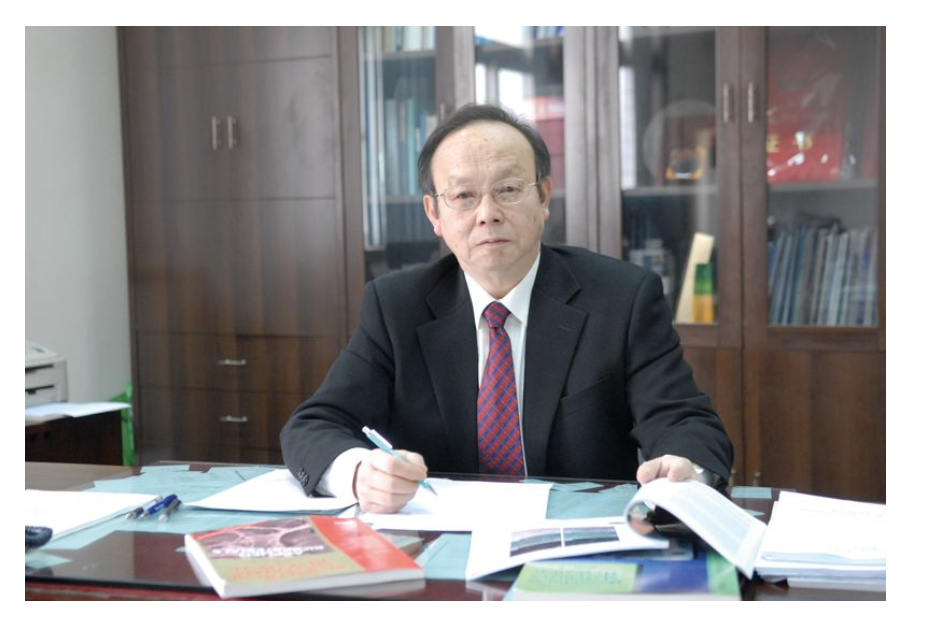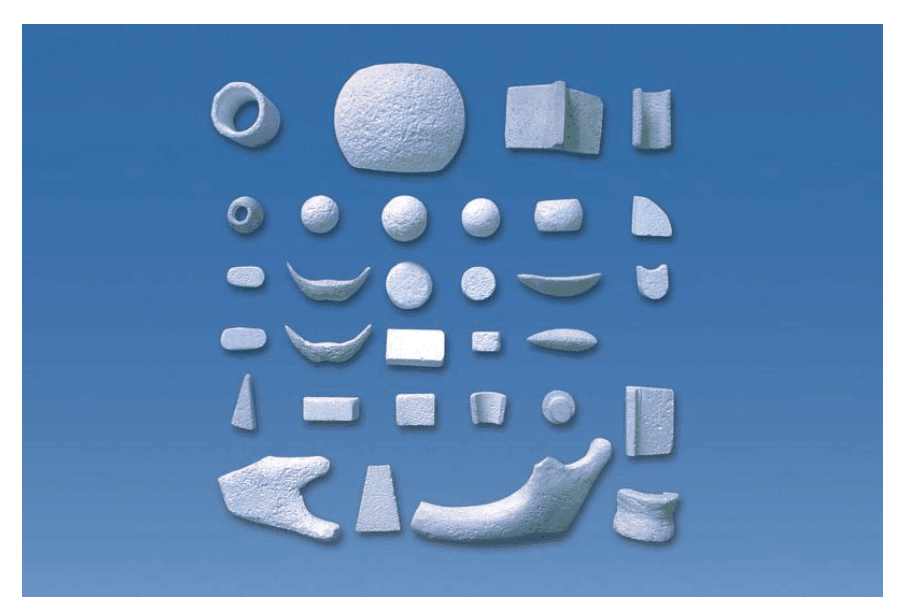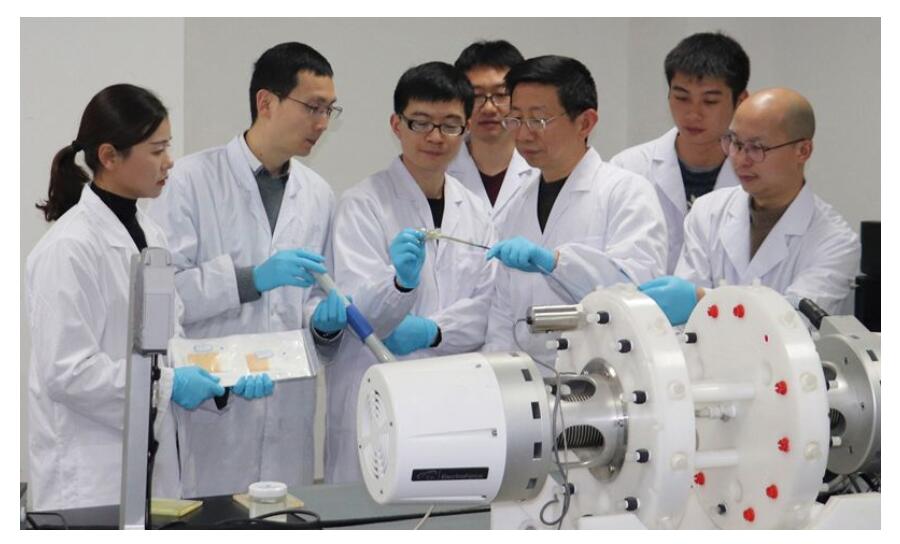
Medical materials and instruments for bone and tissue regeneration provide new medical options for people. The National Engineering Research Center in Biomaterials (NERCB) of our university is the world leader in this interdisciplinary field.Biomaterial engineering is a burgeoning interdisciplinary science, combining material sciences, biology, medicine, and engineering. Established in 1999, NERCB was the first institute dedicated to the field, and has quickly grown into a cross-disciplinary team of more than 100 faculty and staff, including globally renowned experts. It specializes in tissue and function regeneration and reconstruction, and medical implants. Its results are published in high-quality international journals, widely patented, and recognized by national science and technology awards.
Pioneering bone materials

Calcium phosphate ceramics are promising biomaterials for bone regeneration, and a specialism of Sichuan University’s Xingdong Zhang, a member of the Chinese Academy of Engineering (CAE).As the academic leader and honorary director of NERCB, Zhang’s research focuses on biomaterials and tissue engineering for the musculoskeletal system. A pioneer of using lifeless biomaterials to repair tissues and organs, he initiated research on bioactive ceramics in 1983, and was the first in the world to systematically prove that lifeless porous calcium phosphate ceramics can induce bone formation without the use of living cells or bone growth factors. He proposed the underlying mechanism and in 1991 revealed how to make materials osteoinductive. The international biomaterials community commends his material as epoch-making discovery of medical materials.


This work led to Zhang and his team developing the world’s first synthetic bone repair product, with the claim of osteoinduction which gained regulatory approval for commercialization. He has founded three companies, whose products, approved by the CFDA, have been used to treat hundreds of thousands of patients in more than 1,000 Chinese hospitals. Zhang also launched China’s first research on plasma coatings for orthopaedic and dental use. In 2009, he found that collagen-based hydrogel could induce cartilage formation.Zhang’s enormous contributions earned him membership of the US National Academy of Engineering in 2014. Zhang’s election as the president of the International Union of Societies for Biomaterials Science and Engineering (IUSBSE) in 2016 is another demonstration of his impact, and NERCB’s growing international reputation. The term “tissue-inducing biomaterials”, coined by Zhang, was adopted by the IUSBSE Conference on Definitions in Biomaterials in 2018. Zhang has made new headway in his research recently. “The treatment of osteoporosis is a major international problem, because it is difficult for phosphorus and calcium to enter the bone by taking drugs. I would like to reach the bone directly through nano-calcium phosphate material, consequently curing this disease.” He introduced that the research is at the clinical testing phase and expected to enter the market within three to five years.
Biomaterials supporting cardiovascular treatment

NERCB’s director, Yunbing Wang, also the vice president of Chinese Society for Biomaterials, is globally renowned for his research on minimally invasive medical devices for cardiovascular diseases, and diabetes. With more than 150 patents granted in the United States and Europe, he has developed several world-first medical devices.

He and his team have collaborated with a Chinese company to develop a transcatheter aortic valve implant for heart disease treatment. Since its approval by the CFDA in 2017, the product has been used in more than 100 hospitals in China. By developing novel crosslinking methods, such as radical-polymerization and enzyme-oxidative-polymerization, NERCB researchers were able to regulate physical, chemical, and biological properties of heart valves.
NERCB Developments

The Sichuan Testing Center for Biomaterials and Medical Devices, for instance, was established by NERCB in 2003 for medical instrument testing and evaluation. With national accreditation, it is an independent legal entity with approval for testing, and for providing evaluation reports in Chinese and English.
NERCB has also set up a company called Sichuan University Engineering Research Center in Biomaterials. It has six pilot production lines for bone-induced calcium phosphate bioceramics, biomedical collagen, hydroxyapatite bioceramics, dental implants, artificial hip joints, and hydroxyapatite powder.Being initiated by SCU Engineering Research Center in Biomaterials, the IUSBSE Conference on Definitions in Biomaterials was held in Chengdu in 2018. Over 50 world renowned biomaterials scientists from 17 countries and regions attended this conference. The opening of this conference pointed to a substantial growth of China in biomaterials. The conference resolutions will be published by Published by Elsevier in the form of a monograph entitledBiomaterials Definitions of 21st Centurynext year.Sichuan University Engineering Research Center in Biomaterials was established in January 2019. Taking the development of material genetic engineering technology as its core, this research center is an innovative interdisciplinary platform dedicated to the research and development of biomaterials.National Engineering Research Center in Biomaterials has also set up a company called Sichuan University Biomaterial Engineering Research Center Co. Ltd.
Growing reputation
A founding member of IUSBSE, NERCB has organized many international conferences to promote communication and collaboration in biomaterials, including the 9th World Biomaterials Congress, which drew nearly 4,000 participants from 47 countries and regions to Chengdu, China. It also established the Chinese Society of Biomaterials (CSBM) and launched its official journal, Regenerative Biomaterials (RB), in 2014, which was included in the Science Citation Index (SCI) database in March 2018. NERCB’s extensive collaboration with universities and research institutes worldwide enhances its global reputation.
Full article link: https://www.nature.com/articles/d42473-019-00073-z
